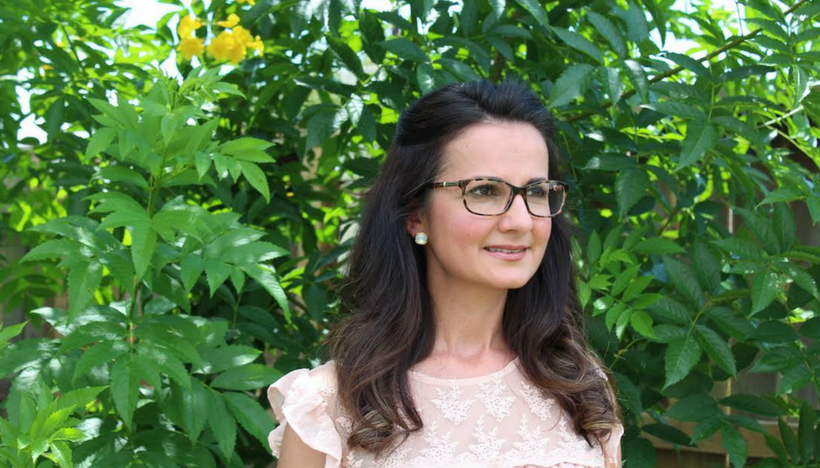This post was written by member Valentina Gonzalez.
Our students bring their cultures with them into our rooms. Each one is unique and important. How we use them in instruction is up to us.
Students come to us with varied experiences. Even students with little or no education have had experiences. They may not be the same experiences we have had. Their experiences may be with cooking, growing crops, or with livestock. Those rich, hands-on experiences are useful too, and we can all benefit from them.
When we respond as educators to our students’ cultures, we understand that cultural differences are assets. We can learn from one another.
Since culture is a huge part of a person’s identity, when we include student culture in daily instruction, we teach the whole child. We empower the child to capitalize on their uniqueness and individualism. And we foster a love of diversity.
Culturally responsive teaching is not about one day of celebrating a certain culture. It’s about daily practices that bring students’ cultures into instruction, valuing each student and what they bring, teaching them as people first in order to maximize their potential as students.
Culturally responsive teaching is:
- using students’ cultural experiences in daily instruction.
- embracing native language and students’ families as assets.
- creating a classroom environment that represents and respects all students.
- communicating clear high expectations for everyone.
In the classroom, here’s what this might look like:
- Tap into culture.
Before you can tap into a student’s culture, you must first know them well. Learning about your students is the key to culturally responsive teaching. And it goes beyond the permanent record folder. It includes talking with students, asking them questions, truly knowing about their family life, history, and experiences. Then you can look for ways to use the assets of various cultures to enhance what you are teaching. Let’s say your students are about to start a unit on rocks and formation, and you know that one of the student’s parents used to be a geologist in their home country. You could invite them to be a guest speaker. We also tap into culture when we encourage our English language learners to use their native language as a resource. Encouraging ELLs to read, write and speak in their native language allows them to hold on to their culture and bridges languages.
- Survey the classroom environment.
Look around your room. What do the walls and resources say? Do they represent the students they serve? Are there resources readily available to support translation for students needing language support? Students should be able to see themselves in the faces on the posters. Their classwork should proudly be displayed on the walls. And books of all types should be available for choice reading. Diversity in text should be represented.
- Create a student-centered classroom.
When students feel they have a voice in the classroom, they take ownership of their learning and are more successful. Provide students with the opportunity to learn about one another, ask questions, and get to know classmates. Actively engage students in learning with lessons that are relevant and compelling. Lessons with less teacher lecture and more student engagement and collaboration will send a message to students that their voices are valued.
In the classroom, here’s what this might sound like:
- Pronounce names correctly.
As simple as it may seem, it is super important. Names are attached to identity. They are words a child has heard consistently since birth. It’s a shame when a child feels forced to create a new name because they feel that their new society can’t pronounce their given name. Take the time to ask each student what they prefer to be called and how to pronounce the name correctly. It may take practice, but it will be worth it.
- Learn a few words in students’ native languages.
Imagine moving to the Philippines and not knowing Tagalog. Everything is written in Tagalog and all you hear is a language you’ve never heard before. Now imagine that your teacher learns a few words in English and says them to you. Maybe she says “Hello” or “Welcome.” Whatever it is, imagine the feeling it would evoke. Perhaps comfort? When students are new to the country and speak little or no English, learning a few words in their native languages helps form a connection, shows that we care, and comforts them.
- Communicate goals with students.
Teachers that employ culturally responsive teaching understand that setting high expectations for ALL of their students is critical. Lowering expectations for ELLs or other students is not an option. English learners are not given less to do; rather they are given equal access to grade-level curriculum with scaffolds and accommodations to support linguistic needs and level the playing field. Once students no longer need scaffolds, they are removed. Student progress is monitored and goals are set for each student.
- Embrace an asset-based mindset.
Culturally responsive teachers understand that being bilingual is a true asset for the student both socially and globally. Growing the bilingual brain is of utmost importance. Teachers who embrace culturally responsive teaching build a classroom community that embraces languages and literacy of all types. Literacy in the native language is valued and encouraged. It is not uncommon to hear students talking and sharing in languages other than English in a classroom that is culturally responsive.
Culturally responsive teaching is not a strategy. It’s more of mindset for teaching that embraces, values, and incorporates culture into daily instruction in order for learning to connect with students. Students feel valued, respected, and linked with instruction.
Valentina Gonzalez is a Professional Development Specialist for ELLs in Katy, Texas. Her 20 years of teaching experience include teaching in the classroom as well as serving as an ESL specialty teacher and district program facilitator.

